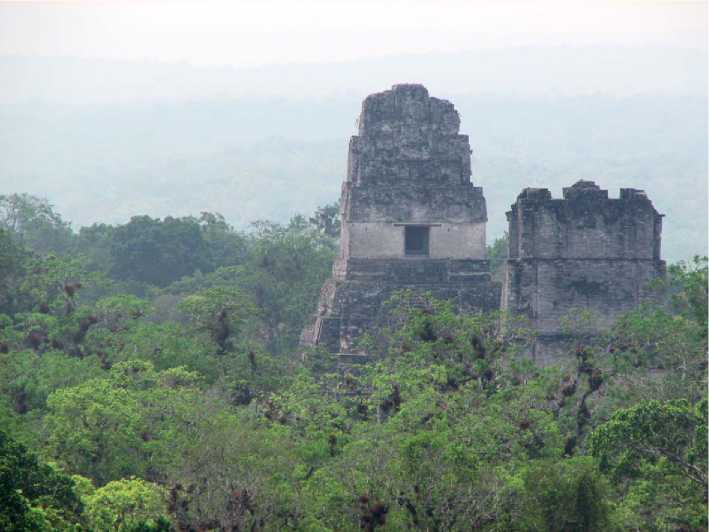There is also increasing agreement as to what constitutes a collapse. Here the author follows the widely held definition which considers a ‘collapse’ to be the loss - sometimes quite abruptly - of a significant

Figure 1 Tikal’s temples rise majestically above their jungle shroud. (Photo by Gyles lannone.)
Degree of extant sociopolitical complexity. The actual characteristics of a collapse can vary, but they generally include a number of the following: (1) a shift toward less sociopolitical complexity; (2) a continuation of some of the characteristics of the state, such as the institution of kingship - but this is often accompanied by significant ideological changes, greater power sharing, and the involvement of multiple individuals in the ruling process (i. e., council rule); (3) less prominence given to individual rulers; (4) a decline in economic specialization - this occurs on the individual, community, and regional scales; (5) less centralized control of the economy and decision-making process; (6) less behavioral control; (7) less emphasis on elite culture, such as monumental architecture, art, status symbols, and writing; (8) some centers witness an abrupt halt to elite construction projects (sometimes in mid-construction); (9) art and art styles often change, and become less standardized; (10) communication networks that previously linked the various components of the state breakdown; (11) redistributive and trade networks breakdown; (12) there are fewer overall linkages between the various communities within the region; (13) a dramatic decrease in the size of unified territories; and (14) to varying degrees, there is a decline in population and abandonment of communities - the upper tier communities are often the first to go; however, people may continue to live within
The ‘ruins’ of the cities, and smaller communities may also be abandoned over time.




 World History
World History









